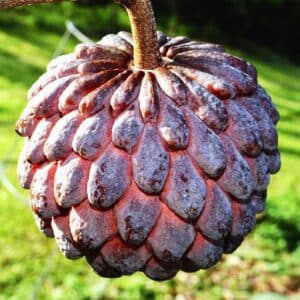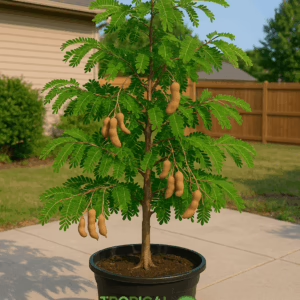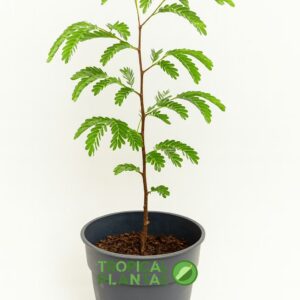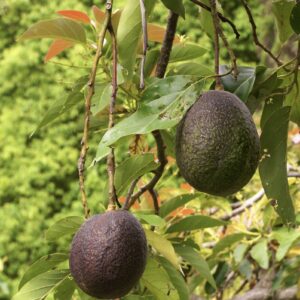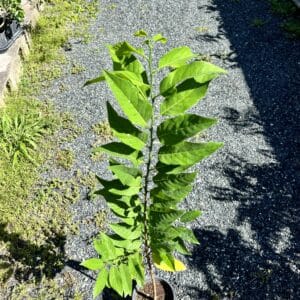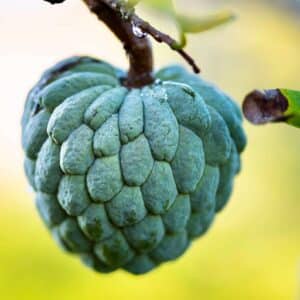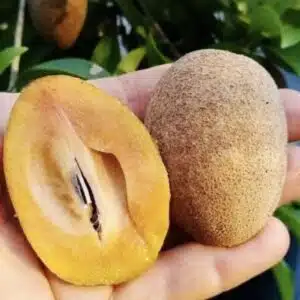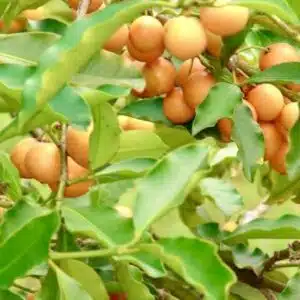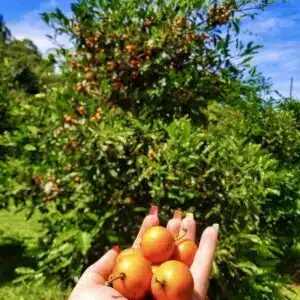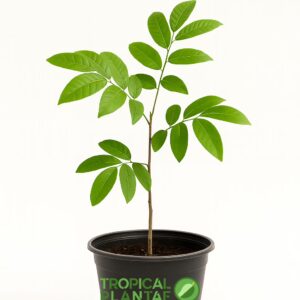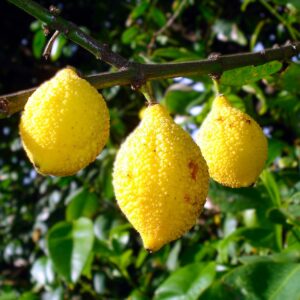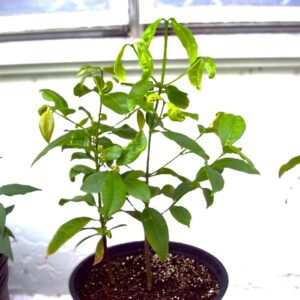Red Sugar apple (Annona squamosa ) Vibrant live fruit tree 12”-24” Thriving
Revealing the Red Sugar Apple Tree: An Orchard of Exquisite Delight
Enter a world where sweetness is painted in hues of red and green, where the air carries the aroma of delectable treats waiting to be savored. The Red Sugar Apple Tree (*Annona squamosa*), an embodiment of natural indulgence, invites you to discover the joy of growing your own luscious fruits and relishing the harmonious blend of flavor and fragrance.
Tamarind fruit tree (tamarindus indica)
Tamarind, scientifically known as Tamarindus indica, is a tropical fruit-bearing tree renowned for its tangy and highly flavorful fruit. The tamarind tree is native to Africa but has been widely cultivated and naturalized in tropical and subtropical regions around the world. Tamarind fruit is used extensively in culinary, medicinal, and even industrial applications due to its sour taste, nutritional benefits, and versatility. The sour variety of tamarind is especially popular for adding acidity and complexity to dishes and drinks.
Jack fruit tropical fruit tree 1’-2’ tall
Jack fruit, scientifically known as Artocarpus heterophyllus, is a tropical tree and fruit that stands as a symbol of abundance, versatility, and wholesome nutrition. This remarkable tree, celebrated for its enormous fruit and diverse culinary applications, invites you to explore the rich world of jackfruit and its role in nourishing both body and soul.
Grafted HASS Avocado (Persea americana) tropical live fruit tree 12”-24”
Hass Avocado Tree - A Bounty of Creamy Delights
The Hass Avocado, celebrated for its rich, creamy fruits, offers not only culinary versatility but also the joy of nurturing a thriving fruit tree.
Interesting Fact
One captivating fact about the Hass Avocado is that it's the most widely cultivated avocado variety globally. It owes its name to Rudolph Hass, a California postman who first discovered and propagated this exceptional avocado in the 1920s. Renowned for its creamy texture and rich, nutty flavor, the Hass Avocado has become a favorite ingredient in salads, guacamole, sandwiches, and various culinary creations.
Red Sugar apple (Annona squamosa ) live fruit tree 3’-4’ feet flowering soon
Revealing the Red Sugar Apple Tree: An Orchard of Exquisite Delight
Enter a world where sweetness is painted in hues of red and green, where the air carries the aroma of delectable treats waiting to be savored. The Red Sugar Apple Tree (*Annona squamosa*), an embodiment of natural indulgence, invites you to discover the joy of growing your own luscious fruits and relishing the harmonious blend of flavor and fragrance.
Grafted Sapodilla / zapote (manilkara zapota) tropical live fruit tree 12”-24”
Sapodilla, also known as Manilkara zapota, is a tropical fruit tree native to Central America and the Caribbean. It is valued for its sweet, juicy fruit that is often compared to caramel or brown sugar. In this description, we will discuss how to plant and care for sapodilla trees, and some of the benefits they can provide.
An interesting fact about sapodilla fruit is that it contains a natural latex that is used to make chewing gum. In fact, sapodilla was one of the original sources of chewing gum, and was prized by ancient Mayan and Aztec cultures for its sweet, chewy properties. The sapodilla latex is harvested by making cuts in the bark of the tree and allowing the sap to flow out and harden. The hardened sap is then collected and processed into a chewy, rubbery material that is used to make gum. Today, most commercial chewing gum is made with synthetic latex, but some specialty gum makers still use natural sapodilla latex to create a unique and flavorful chewing experience.
Lemon Drop Mangosteen (garcinia intermedia) Fruit Tree 3″-12″
Garcinia intermedia, commonly known as lemon drop mangosteen or camias, is a tropical fruit tree celebrated for its unique and zesty fruit. This remarkable tree, with its glossy green leaves and tangy, citrus-like berries, invites you to explore its refreshing taste and the potential health benefits it offers.
Zesty Tropical Delight:
The fruit of the Garcinia intermedia tree resembles small, round, and yellow to orange berries. These berries have a flavor profile reminiscent of citrus fruits, with a tangy and slightly sour taste. They can be eaten fresh, used in salads, or made into refreshing beverages and jams



